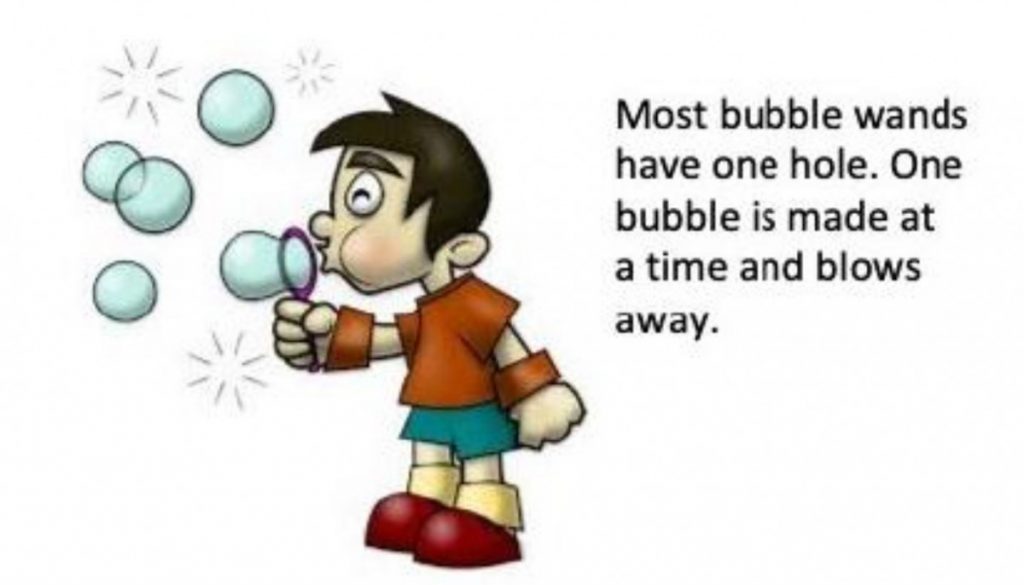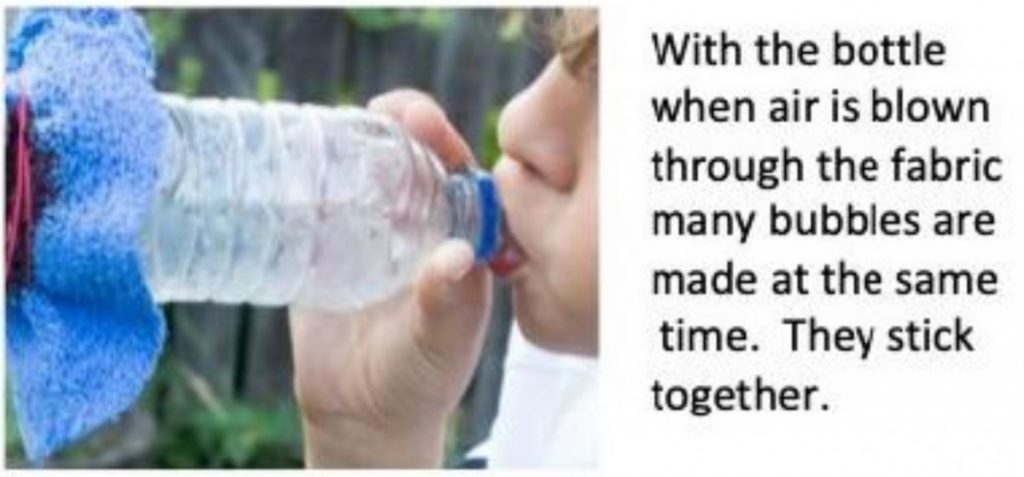Can you make long chains of bubbles that look like snakes?
Give it a try! Then experiment by changing the materials a bit and see what happens!
What you need:
- 1. Dishwashing liquid soap. (Many report that Dawn works best.)
- 2. Measuring cup and water.
- 3. Plastic water or soft drink bottle; 16 oz bottle works well.
- 4. Washcloth or other piece of cloth – or several different pieces of cloth.
- 5. Rubber band.
- 6. Knife or scissors and adult to cut off bottom of plastic bottle.
What you do: (from https://www.stevespanglerscience.com/lab/experiments/bubble-snakes/ ) 1. Make the bubble solution as follows:
— pour 2-3 tablespoons of liquid dish soap into cup or bowl
— (optional) add some glycerin or Karo syrup for stronger, longer lasting bubbles
— add about 9 oz of water to the cup or bowl.
— stir well and let the solution sit undisturbed for up to 24 hours before use. The bonds in the solution will strengthen creating a super solution.
2. Make the “bubble wand”
— ask an adult to cut off the bottom of a plastic bottle
— cover the big just-cut open end of the bottle with a washcloth or sock
— secure to the bottle with a rubber band
3. See if you can make the bubble snakes
— dip the fabric end of the bottle into the soap solution
— blow into the mouth of the plastic bottle. What happens? Blow harder!
— if you want color, put some drops of food coloring on the fabric
4. Experiment with different materials to see if the results differ
— use different amounts of soap
— substitute some other liquid such as orange juice, milk, soft drink for water
— use the soap solution right after you make it rather than letting it sit overnight– use different types of fabric for the “bubble wand”
— blow softer and harder
5. Record in your science journal whether you were able to make snakes and what they were like?
— observe how they changed when you altered the materials or procedure
— record all of your observations in your journal
— If you were going to tell your friend how to make the best “bubble snake” what would you tell them to do? Write it in your journal.
What is happening here?
— Usually a bubble wand makes one bubble at a time. Each bubble blows away when made.

— With the “snake bubble wand” the cloth has small pockets of air, each of which acts like a “bubble wand”
— When you blow into the bottle, air is pushed into the little pockets that are filled with bubble solution and tiny bubbles are formed and pushed out of the fabric. Sometimes the bubbles get larger as they leave the fabric. Many stay small.
— As they come out of the fabric the bubbles stick together.

A more complete explanation (www.scientificamerican.com/article/bring-science-home-best-bubbles/):
Water molecules are attracted to one another. The slightly negative charged oxygen ends of the water molecules are attracted to the slightly positively charged hydrogen ends of other water molecules, as illustrated in Super Scientists Activity #2. The air above the water has few water molecules to attract water molecules, so water molecules are attracted more to the water molecules around and below them than to the air above. This creates a force (“surface tension”) that allows water striders (insects) to walk on water. It also keeps big bubbles from forming in pure water.The liquid dish soap lowers the surface tension of the water by reducing the attraction of the water molecules for one another. A film of soap and water allows big bubbles to form.